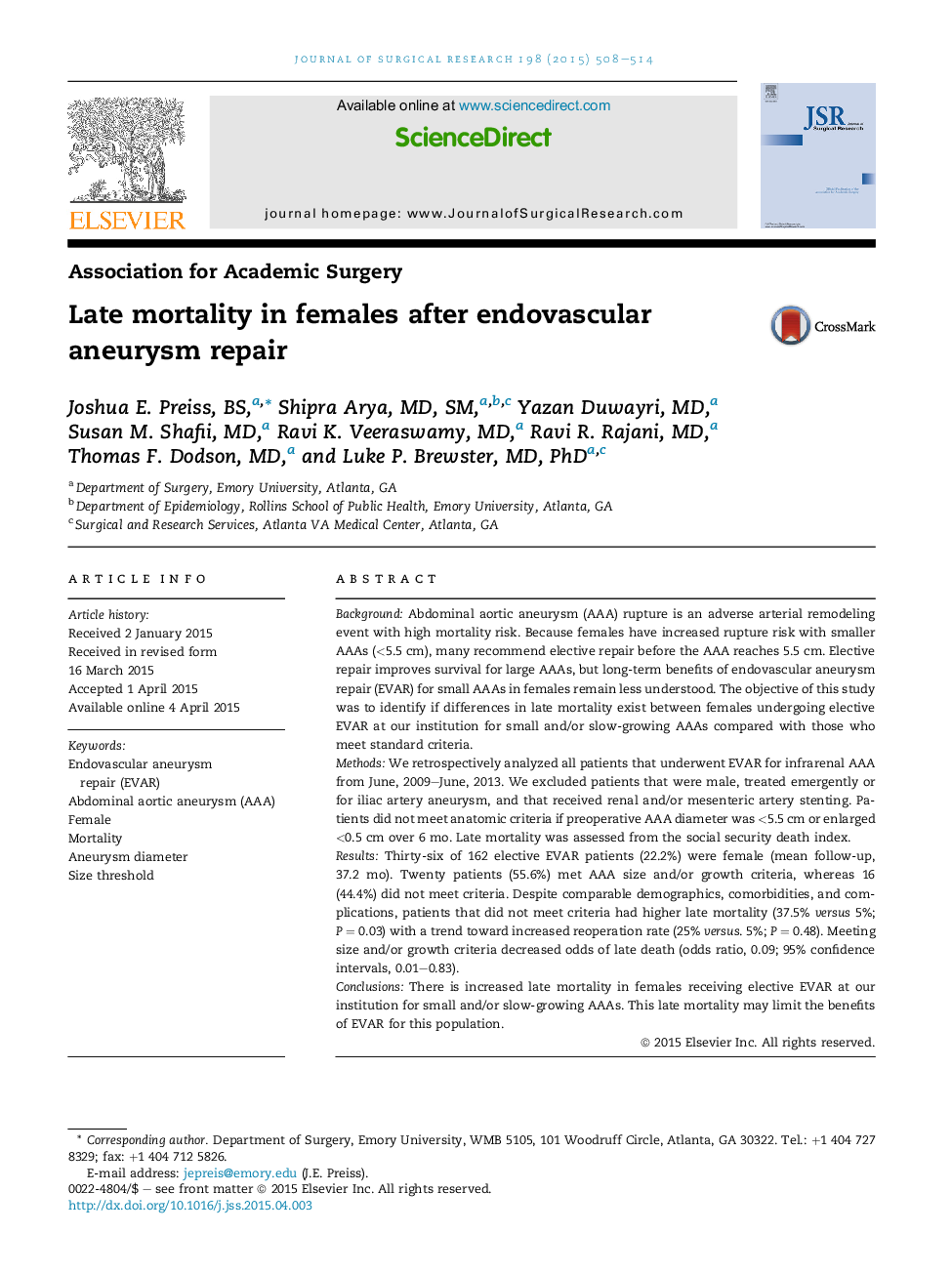| Article ID | Journal | Published Year | Pages | File Type |
|---|---|---|---|---|
| 4299738 | Journal of Surgical Research | 2015 | 7 Pages |
BackgroundAbdominal aortic aneurysm (AAA) rupture is an adverse arterial remodeling event with high mortality risk. Because females have increased rupture risk with smaller AAAs (<5.5 cm), many recommend elective repair before the AAA reaches 5.5 cm. Elective repair improves survival for large AAAs, but long-term benefits of endovascular aneurysm repair (EVAR) for small AAAs in females remain less understood. The objective of this study was to identify if differences in late mortality exist between females undergoing elective EVAR at our institution for small and/or slow-growing AAAs compared with those who meet standard criteria.MethodsWe retrospectively analyzed all patients that underwent EVAR for infrarenal AAA from June, 2009–June, 2013. We excluded patients that were male, treated emergently or for iliac artery aneurysm, and that received renal and/or mesenteric artery stenting. Patients did not meet anatomic criteria if preoperative AAA diameter was <5.5 cm or enlarged <0.5 cm over 6 mo. Late mortality was assessed from the social security death index.ResultsThirty-six of 162 elective EVAR patients (22.2%) were female (mean follow-up, 37.2 mo). Twenty patients (55.6%) met AAA size and/or growth criteria, whereas 16 (44.4%) did not meet criteria. Despite comparable demographics, comorbidities, and complications, patients that did not meet criteria had higher late mortality (37.5% versus 5%; P = 0.03) with a trend toward increased reoperation rate (25% versus. 5%; P = 0.48). Meeting size and/or growth criteria decreased odds of late death (odds ratio, 0.09; 95% confidence intervals, 0.01–0.83).ConclusionsThere is increased late mortality in females receiving elective EVAR at our institution for small and/or slow-growing AAAs. This late mortality may limit the benefits of EVAR for this population.
